디자인 구성 요소

문서 위치
Manufacturing Process of Hanji
하위메뉴
본문내용
-
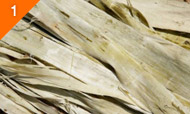
- Mulberry harvest and steeping to prepare for barking
- The harvest of one-year old paper mulberry tree begins in November and continues through February. Paper mulberry branches are steamed for easy peeling. After steaming, the peeled barks are removed the outer layer from the black bark. Bark peeling is peeled again to make white bark.
-
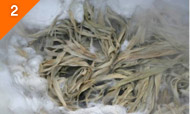
- Cooking of the white bark
- An alkaline solution that they obtained by ashes(buckwheat stalk, straw,bean stalk and so on) in water. The white bark is socked in the alkaline solution called lye and boiled for 4~5 hours to remove non-fibrous materials (lignin, pectin and so on).
-
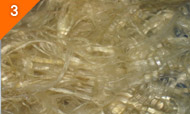
- Washing boiled mulberry and bleaching of the bast fiber, cleaning impurities
- After boiling, the bast fibers are washed in flowing water for about half a day and bleached with the sunlight under the water for 5~7days.After washing and bleaching, the bast fibers that are damaged by hail, frost, insects, or sprouts are sorted out one by one.
-
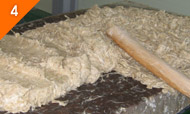
- Disintegrating mulberry fibers and dissolving "mulberry starch" (darkpul)
- The clean bast fibers are beaten on the stone by the wooden bat to soften the fabric. After beating, the beaten bast fibers are separated with the water and mix those well with mulberry starch called darkpul in the chest. The darkpul obtained from the root of hibiscus (Controlling the fiber precipitation in the chest, and the flowing speed of water on the wire).
-
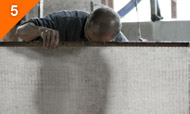
- Forming the wet sheet
- The traditional method of papermaking uses a tool called Oibal. A frame is inserted and water removed to make two wet papers. To adjust thickness, two wet papers are attached in different directions to make one complete sheet of paper. In this way, the paper becomes more durable.
-
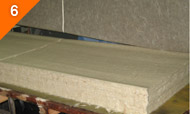
- Removing the water from the mat of sheet pressing
- After making a pile of about 400~500 sheets of papers, it has to be left for a long time(during one night) to remove water completely. If water is manually removed, scars are remained on the papers.
-
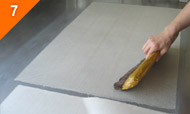
- Drying the sheet
- Korean papers are dried on heated floors, wooden walls, or sunlight.Slow drying dries papers evenly, prevents shrinking, and makes papers more durable. These days, steel panels are heated with hot steam and used to dry each sheet of paper.
-
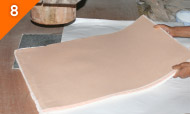
- Pounding the dried paper sheets
- The dried sheets are pounded to make the surface smooth. This process is known as 'dochim.' Traditionally, a treadmill-type pounding device was used. The process of 'dochim' not only compresses the fibers, but also makes the surface smoother and more lustrous.
본문 다시읽기
리뷰컨텐츠는 현재 페이지의 본문내용에 다시 접근할 수 있도록 링크를 제공합니다.



